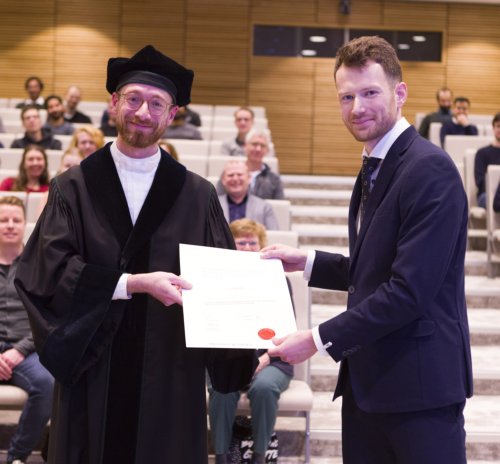Interface engineered ultrashort period soft X-ray multilayers
Multilayer structures with complex compositions and sub-nanometer-thick films are used in a wide range of high-tech optical and electronic devices. Multilayer Bragg structures replace conventional lenses in EUV and X-ray optical systems. Higher resolution systems require shorter wavelength radiation for which shorter period multilayers are necessary. Although significant progress has been made in achieving near-theoretical reflectance for multilayers with thicker (>5 nm) periods, the reflectance of multilayers with shorter periods remains a challenge.
PhD student Dennis Ijpes went down to single-nm period multilayer structures in his research, pushing the limits of what is physically possible. In his thesis, defended on December 13th, 2023, Dennis demonstrated the fundamental behavior of multilayer structures at a sub-nm level from the physical and chemical interaction of the deposited materials to the use of as thin as 0.1 nm barrier layers. Through his work, a significant increase in the soft X-ray reflectance for several W-based multilayers with periods of 2.5 to 1.0 nm has been demonstrated. These multilayer systems can be used as reflective mirrors in WD-XRF applications.
Dennis Ijpes did his research in the XUV Optics group in the Science and Technology Department led by Prof. Dr. Marcelo Achermann. Dennis joined the group as a technician but quickly demonstrated extraordinary abilities that allowed him to pursue a career in science. This Ph.D. defense marks the beginning of Ackermann's role as Ph.D. supervisor at the University of Twente.
The above-mentioned thesis has been carried out in the frame of the Industrial Partnership Program “X-tools,” Project No. 741.018.301, funded by the Netherlands Organization for Scientific Research, ASML, Carl Zeiss SMT, and Malvern Panalytical. The Physikalisch-Technische Bundesanstalt (PTB) EUV-radiometry group is acknowledged for reflectance measurements.






